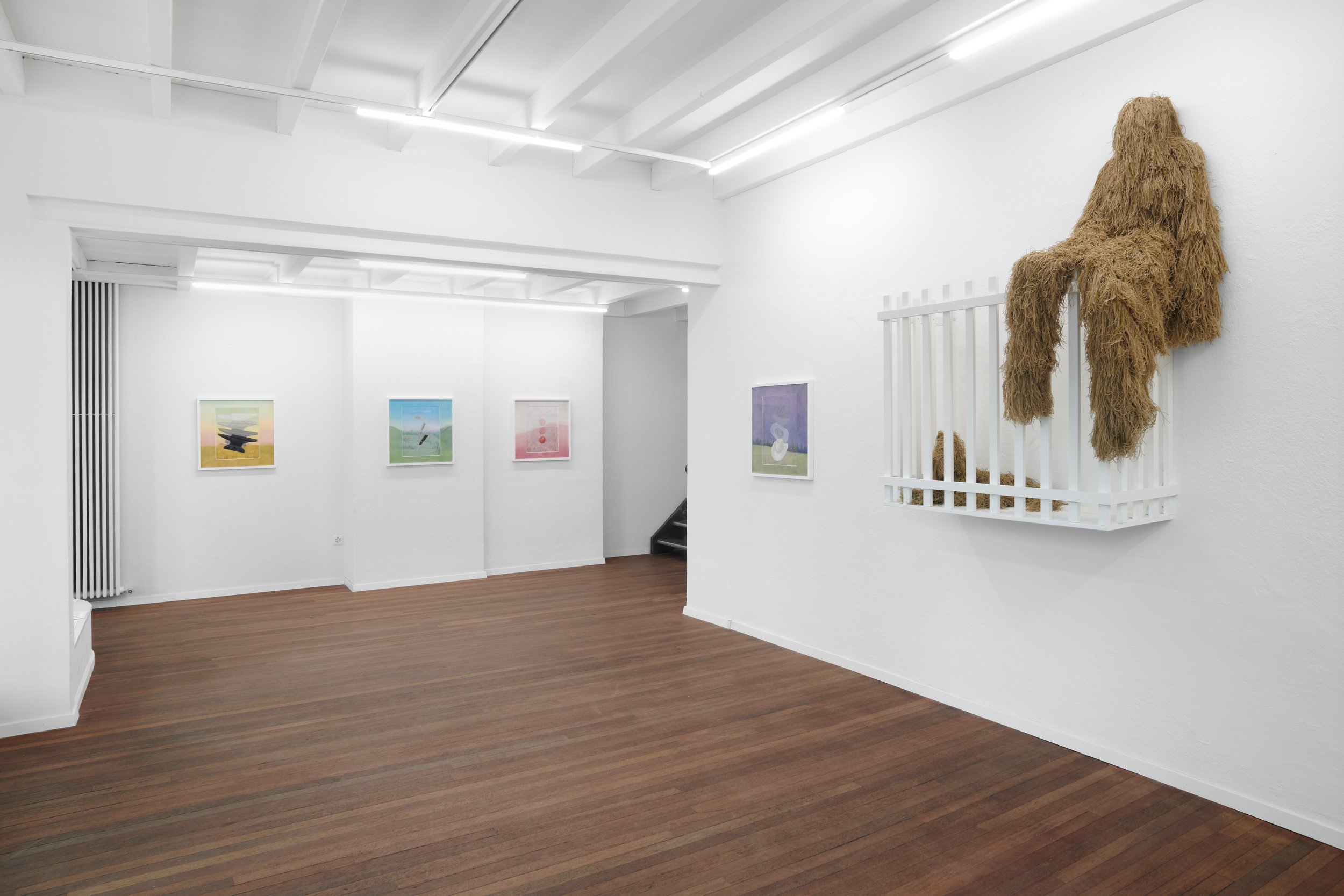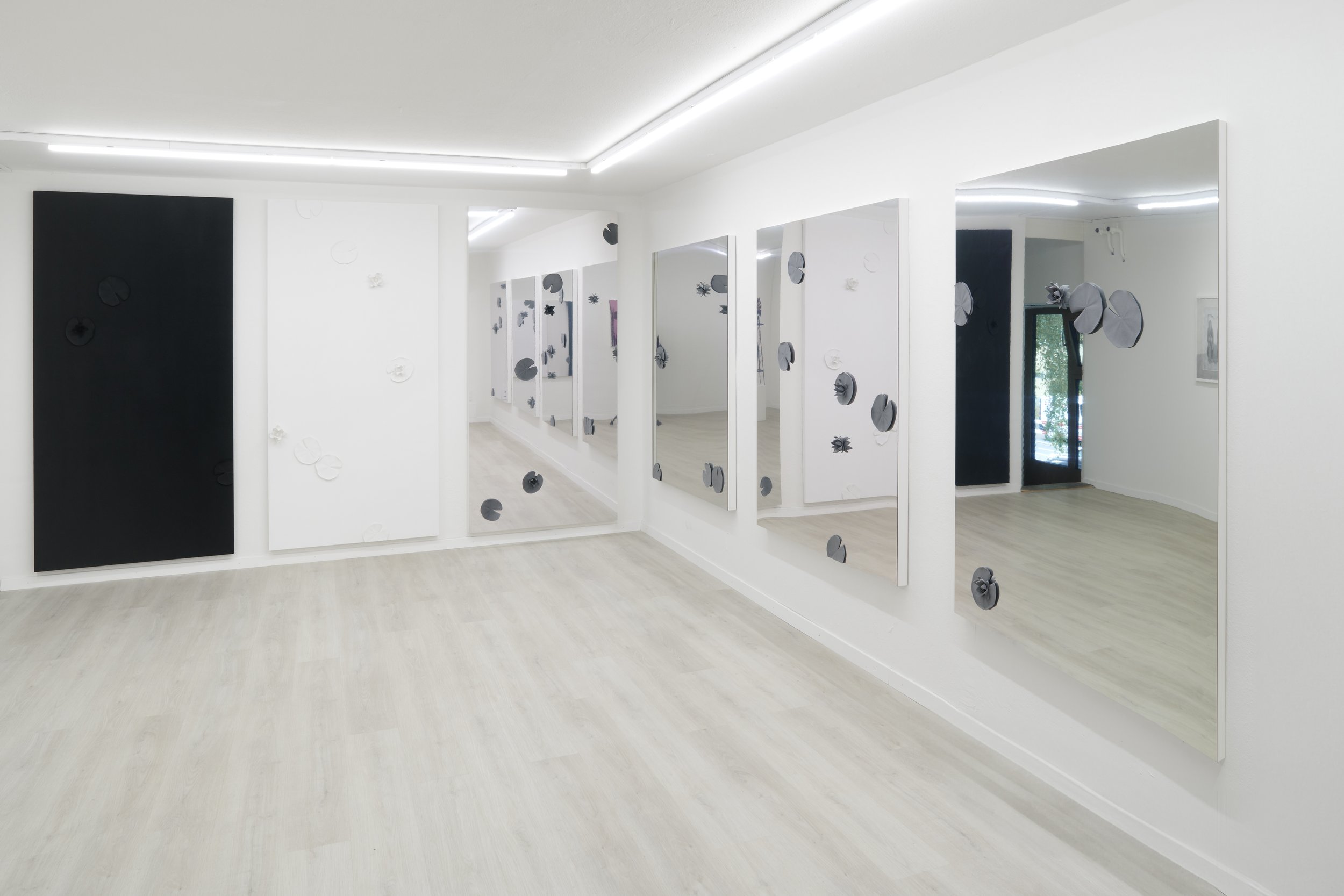Adam Cruces: Necessary Evil
Opening: 31 August 2024, 6 - 9 pm
Exhibition: 4 September — 26 October 2024
Figure in a Swamp (detail), 2024 Pastel on velour and mat board, framed 62 x 62 cm.
For his second solo exhibition with Blue Velvet, Adam Cruces continues his exploration of human interaction with nature. His new work draws inspiration from rural landscapes—plains, deserts, mountains, as well as swamps and bayous. While each of these environments is unique, they share a rustic quality that evokes both tranquil beauty and severe danger. Necessary Evil delves into the elements associated with these landscapes and their manipulation, transforming the experience into peculiar moments of (self-)reflection.




Adam Cruces, born and raised in Texas, leverages his American upbringing in order to arrive at a multiplicitous creative domain that likewise incorporates his current Zurich habitation. He touches base with sentiments from more recent Western films like No Country for Old Men and There Will Be Blood. The stories of Cormac McCarthy also provide a touchstone here. As such, this exhibition can be understood not as a love letter, but rather a willful nod to his own international flux.
Blue Velvet’s duplex is populated by a trove of Cruces’s multimedia devices. The main floor sees plains, deserts, and mountains tied up in pastel images. Cowboy hats, apples, anvils, and Swiss Army knives can be seen falling through these various landscapes, as though the objects have been frozen in time. Here Cruces dislodges still-life fodder from its art historical bedrock. Alternatively, this gesture recalls the aesthetics of Looney Toons and Eadweard Muybridge’s examination of frozen motion. The artist’s methods of visual articulation in these pastel images refer to those of Odilon Redon, whose symbolist tendencies are rooted in his own belief in the artist as an absorbent agent. “From day to day the artist submits to the fatal rhythm of the impulses of the universal world which envelops him,” Redon writes, emphasizing the direct relationship between creator and the space beyond. Cruces greatly refracts this sentiment and converts its essence into his contemporary situation.
Sculptural interventions are also peppered throughout this space. One of series is influenced by the sword in the stone, but the fake stones bear scythes and allude to the grim reaper’s choice weapon. In Switzerland, this object is used to trim grass as steep hillsides essentially prohibit the deployment of lawnmowers. The works on this floor are likewise attached to Cruces’s formative years in the countryside, memories of which the artist recalls fondly. His experience of the United States is largely split between coastal Texas and northern Missouri. There persists a certain recognition of the geographical connections between American plains and meadows with respect to the grassy, rolling hills of Europe.
Elsewhere, an elevated balcony contains a ghillie-suited figure, which becomes somewhat of a “swamp thing.” Contained within the same fenced platform, a dog form is dressed in synonymous garb. These bodies perform as surveilling agents, though instilled with a romantic–albeit subtle–referent by way of Monet’s haystacks. The impressionist is also a quotation in the gallery’s “penthouse.” Engaging a 3D printing process, Cruces presents a new simulacrum of water lilies that facilitates their reiteration in a contemporary landscape. After all, it’s difficult to see the aquatic herb in art without recalling the work of Monet. In this instance, however, Cruces opts for an aerial perspective, producing a bird’s eye view as opposed to a horizontal one. The aluminum’s reflective surface additionally reinforces that of the water’s, linking this body of work to the myth of Narcissus.
The upper floor draws influence from the American Gulf Coast region, its focal point being the southern wetlands; creeks surrounded by swamp water and Spanish moss-covered trees, the infinite expanses of grassy marshes driven past on road trips to Galveston beaches. The vistas made a strong impression on a younger Cruces, activated here as spurs for artistic exploration. This is literally reflected in the mirrored water lilies and a small-scale, decorative windmill that shimmers by way of its chameleon-chrome coat. Returning again to the poetics of Redon, Cruces knowingly picks up on the French artist’s interest in man’s relationship to nature. The Symbolist writes about art as “a means of exploring the recesses of the mind” and how one who creates is “in perpetual communion with the most fortuitous of phenomena.” Consequently, Necessary Evil platforms this collapse of inner and outer worlds, engendering new paths for aesthetic inquiry.
– Reilly Davidson
Scythe in the Stone (Blue), 2024 Scythe, acrylic, fiberglass 150 x 70 x 75 cm
A Falling Knife Has No Handle, 2024 Pastel on velour and mat board 62 x 62 cm
Newton, 2024 Pastel on velour and mat board 62 x 62 cm
Balcony, 2024 Acrylic, polyurethane, ghillie suits, wood 170 x 139 x 70 cm
Windmill, 2024 Acrylic on metal 120 x 55 x 55 cm
Water Lilies (Pink), 2024 Acrylic and polyamide SLS on plexiglass 60 x 60 cm






